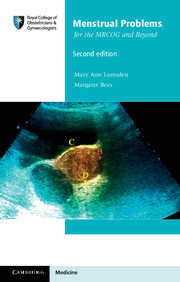
-
Select format
-
- Publisher:
- Cambridge University Press
- Publication date:
- June 2014
- February 2014
- ISBN:
- 9781107445208
- 9781107677388
- Dimensions:
- Weight & Pages:
- Dimensions:
- (234 x 156 mm)
- Weight & Pages:
- 0.24kg, 164 Pages
You may already have access via personal or institutional login
Book description
Menstrual problems are among the most common reasons for primary care and specialist referral. Therefore, it is important for all gynaecologists and primary care practitioners to have a basic understanding of menstrual reproductive physiology to enable them to counsel women safely and accurately. This second edition has been comprehensively updated to reflect current clinical practice and new research. The contents cover the diagnosis, management and treatment - both medical and surgical - of a wide range of menstrual disorders, including excessive menstrual loss; fibroids; dysmenorrhoea; endometriosis; chronic pelvic pain; delayed menarche; premature ovarian failure; polycystic ovary syndrome; and premenstrual syndrome. This is a perfect introduction for any gynaecologist who needs an accessible and concise introduction to modern management of menstrual problems. It also acts as an ideal revision guide for candidates preparing for the Part 2 MRCOG examination, fully covering the RCOG curriculum for menstrual problems.
Contents
Metrics
Full text views
Full text views help Loading metrics...
Loading metrics...
* Views captured on Cambridge Core between #date#. This data will be updated every 24 hours.
Usage data cannot currently be displayed.
Accessibility standard: Unknown
Why this information is here
This section outlines the accessibility features of this content - including support for screen readers, full keyboard navigation and high-contrast display options. This may not be relevant for you.
Accessibility Information
Accessibility compliance for the PDF of this book is currently unknown and may be updated in the future.

